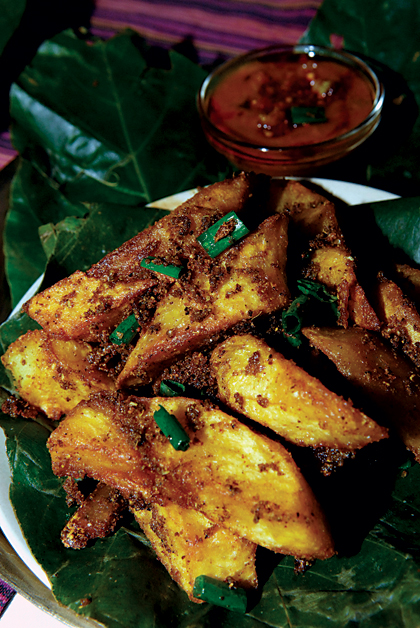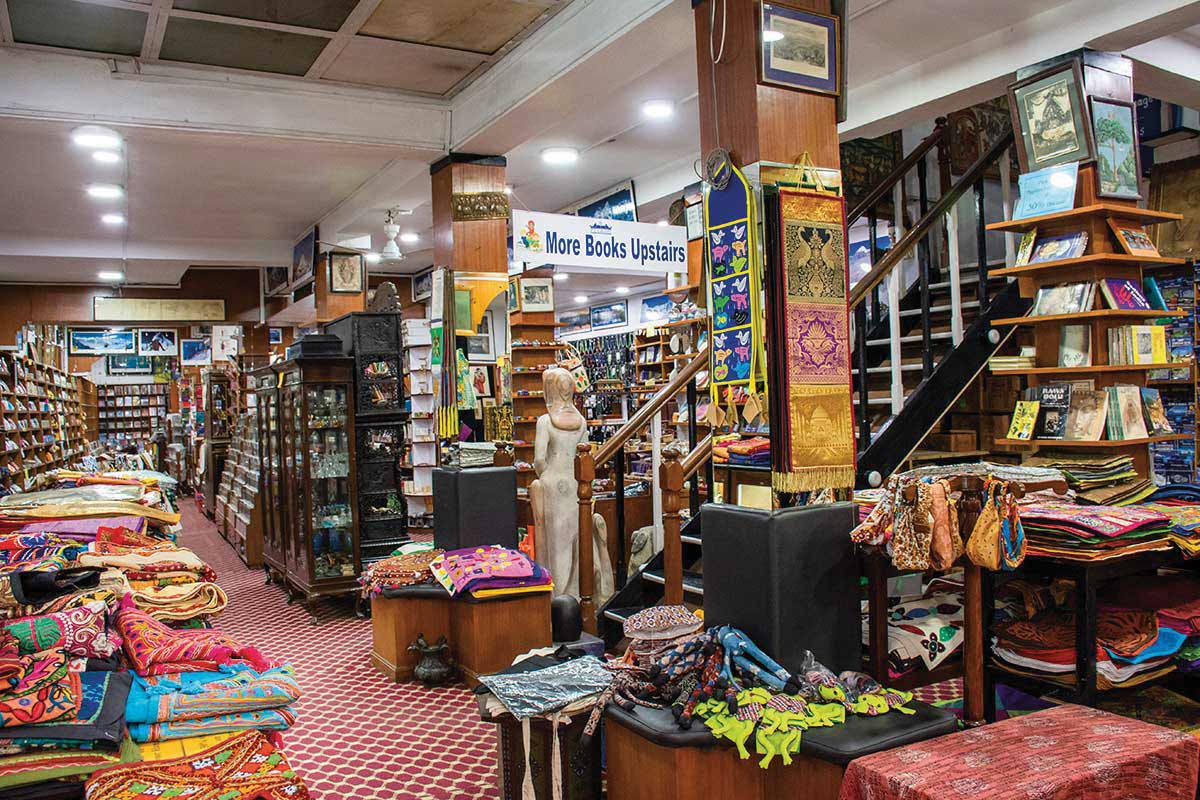It gets frustrating to be in Thamel if one wishes to have a taste of Nepalese culture. No doubt, Nepali art hangs everywhere on the streets. We have to shield our eyes from the gleam of metallic artifacts and khukris in the display cabinets. And it is almost impossible to shut out the rhythmic religious music played in stores at every corner. All these just make it more frustrating. Is it really so difficult to have a ‘taste’ of Nepalese culture in the heart of the tourism belt?
 Arguably yes. There is no lack of food in Thamel: American, Chinese, Japanese, and Italian. Western, Asian, Continental, International. One can easily savor different cuisines in a single location. Within a one-kilometer radius of Thamel, there are 180 restaurants serving all kinds of international cuisine. Yet Nepalese cuisine in the country in which all these outlets are situated is the hardest to find. Indeed, what’s the point in traveling halfway around the globe, only to find yourself once again munching familiar food that you could have eaten at home?
Arguably yes. There is no lack of food in Thamel: American, Chinese, Japanese, and Italian. Western, Asian, Continental, International. One can easily savor different cuisines in a single location. Within a one-kilometer radius of Thamel, there are 180 restaurants serving all kinds of international cuisine. Yet Nepalese cuisine in the country in which all these outlets are situated is the hardest to find. Indeed, what’s the point in traveling halfway around the globe, only to find yourself once again munching familiar food that you could have eaten at home?
“Visitors come to Nepal not looking for food that they can easily get back home. Travelers will be keener to taste food from their holiday destination,” says 60-year-old Narendra Man Singh, owner of Thamel House Restaurant. Serving up authentic traditional Nepali and Newari cuisine for the past 16 years, Thamel House Restaurant is housed in a 19th century building based upon the traditional pagoda architectural style that has been meticulously restored to its yester-years glory. It is where one can savor the real taste of Nepal and at the same time relish the richly preserved traditional settings representative of Nepali culture.
Apart from giving travelers the opportunity to taste Nepali food, Narendra, who is also the GeneralSecretary of the Restaurant & Bar Association of Nepal, wishes to set right the inaccurate perception of Nepali food for those who have tried it before. Instead of a dreary mealtime which starts with a disapproving ‘dal-bhat again?’, a dining experience at Thamel House may just compel you to earnestly request ‘dal-bhat again!’ at the end of it. According to Narendra, some diners first tasted dal-bhat while trekking, prior to visiting his restaurant; but, once they tried it here, they conclude that the real taste of this ubiquitous dish can only be found at Thamel House.
Diners have been known to be so impressed with Thamel House that they make it a point to revisit and savor the food on their return trips, even if their last trip to Nepal was almost a decade ago. To them, the dining experience brings back fond memories of their previous visit. Many compliment Narendra for ensuring such great taste standards over the years.
In sweeping times of change, holding onto traditions seems like a difficult, if not pointless, endeavor. The 130-year-old Thamel House building stands out amongst the overcrowding mishmash of sterile concrete structures that have sprouted up in recent times. Narendra’s family lived here for several generations over 105 years, but the house’s deteriorating condition required them to decide on its fate—pull it down or spruce it up.
Following the suggestion of his brother-in-law, about two decades ago, Narendra took charge of the renovation. What used to be partitioned rooms on the second level, where the owner used to stay, have merged to form spacious dining areas and the attic level have been refitted with bamboo and bitumen that replace the aging wooden ceiling beams. Thamel House’s unique Buingal Bar was the exact spot where the home’s kitchen used to be. In Newari, buingal refers to the kitchen in the attic. Door and window frames were brought back to life in the hands of experienced carpenters, skilled in traditional craftsmanship, who were hired to painstakingly restore the building’s original look.
Sadly, when it comes to dining choices in Thamel, Nepali food has been given less precedence. Flip through the menus of restaurants and chances are that you’ll find Nepali dishes sidelined and placed under headings like ‘Snacks’ or ‘Side Dishes’.
Thamel House, however, offers you only Nepali or Newari dishes and Narendra strongly recommends set meals that provide diners with a variety of dishes to get a wholesome Nepalese meal. The welcome drink of rakshi and snacks are followed by some of the restaurant’s popular dishes such as aloo tareko (fried potato), bandhel tareko (sautéed wild boar). The highlight is the dal-bhat where kalo dal (black lentils) is served. The rich texture and fragrance of the black lentils is the key dish behind winning over hitherto Nepali food skeptics. Other notable dishes are the mas ko bara (mashed lentil cakes topped with minced meat and egg) and the crisp kukhura ko sekuwa (grilled chicken) The Newari set meal, which brings you a representative sample of 11 dishes, is only available upon request, but is definitely worth a try. Make your reservations early.
Despite being away from the heart of Thamel, business is good. Rather, its location is a major selling point as it is removed from the racket of Thamel. The restaurant usually host groups and can hold up to 130 diners, in a combination of largely Asian style floor seating and some waist-high typical dining style. It opens from 11am with last orders at 9:30pm.
Getting a taste of the ‘real Nepal’ is only going to get more frustrating as restaurateurs surrender the old but dear styles of cooking, as they rush to hop on the tourism bandwagon. Experiencing a timeless ambiance with distinctive cultural flavors makes a visit to Thamel House restaurant satisfying at all times.
Thamel House is located at Thamel Tole, Kathmandu. Phone: 441.0388.
Some lesser-known vegetable dishes from the southern plains
I’m not a vegetarian but I love vegetables. And whenever I get to the southern plains of Nepal, I try...










